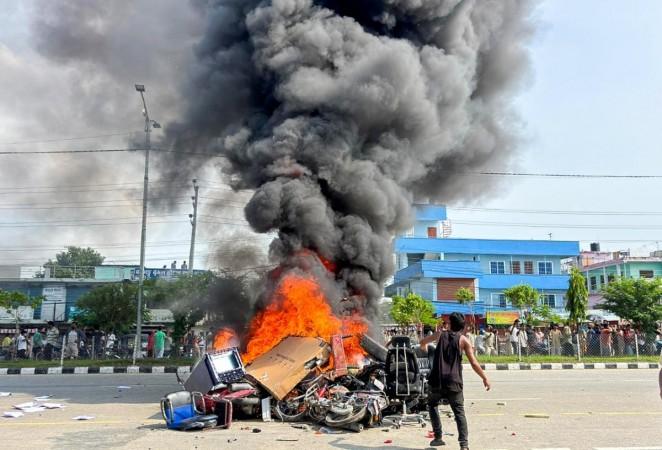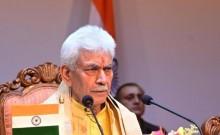
"In the algorithm of history, the oppressed code first. The elites? They're still debugging their firewalls."
Picture this: a 17-year-old in Kathmandu, huddled over a cracked smartphone screen, VPN flickering like a defiant flame against the Himalayan chill. It's September 4, 2025, and Nepal's government has just slammed the digital guillotine on 26 social media platforms Facebook, Instagram, WhatsApp, YouTube, X, LinkedIn, Reddit, Signal, Snapchat, and more citing non-registration under the Social Media Directives 2080 and a Supreme Court order. What was meant to be a quiet clampdown on "fake news" and cybercrimes explodes into a cataclysm: by September 8, Parliament burns under a sea of tear gas and rubber bullets, 51 souls lost to live ammunition and retaliatory fires, over 1,300 wounded, and thousands of prisoners fleeing shattered jails.
Prime Minister K.P. Sharma Oli flees as curfews choke the capital, the airport seals shut for 24 hours, and the Nepal Army deploys tanks to the streets a tableau of chaos unseen since the 2008 republican dawn.
But from this inferno rises not anarchy, but audacity: a leaderless legion of Gen Z Nepal's median age of 25, armed with memes and Molotovs topples a regime not with ballots or barricades alone, but with bytes. By September 12, former Chief Justice Sushila Karki, 73, is sworn in as Nepal's first female interim Prime Minister, her mandate crowdsourced via Discord polls with 145,000 votes, AI-vetted by ChatGPT, and ratified by a dissolved Parliament.
This is no glitch in the matrix; it's the birth of an internet-native revolution, where pixels pierce palaces and algorithms anoint queens. As the smoke clears over Singha Durbar's charred facade, Nepal poses a profound provocation to the world: in an era of fractured democracies, can code truly crown the crowd?
The Tinderbox of Tyranny: Brewing a Perfect Storm
"The ban was less a regulatory hiccup than a desperate muzzle on mounting outrage a government's futile fist against the flood of free speech."
Nepal's unrest didn't erupt in a vacuum; it simmered in the cauldron of systemic rot, where youth unemployment gnaws at 20.8% for ages 15-24, per World Bank data, and per capita income languishes at $1,300 amid scandals like the $71 million Pokhara airport embezzlement. Enter the "Nepo Kids" politicians' progeny flaunting Lamborghinis and Dubai penthouses on TikTok, while 90% of Nepal's 30 million internet users (one of South Asia's highest per capita rates) scroll through their own precarity.
Hashtags like #GenZAgainstCorruption and #EndNepotism, born in late August Reels and Instagram skits, viraled into a viral venom, mocking elite excess and channeling diaspora remittances (from 20% of Nepalis abroad) into calls for accountability. The social media ban, enforced post-September 3 deadline, was the spark: platforms rejected registration as an infringement on privacy and expression, but Kathmandu saw it as a silencer for the scandals.
Deeper still, this was generational jihad against a post-2008 republic that promised democracy but delivered dynasties 12 governments in 17 years, each more entangled in graft. Hami Nepal, a youth NGO born from 2015 earthquake relief, seeded the soil with four pre-ban posts, forging "Youths Against Corruption" groups that blended humanitarian ethos with revolutionary zeal. As Steven Feldstein of the Carnegie Endowment notes, such bans don't douse dissent; they distill it, turning casual scrollers into insurgents. In Nepal, the tinderbox wasn't just dry it was digital dynamite.
Pixels as Pitchforks: The Alchemy of Preparation
"From memes to manifestos: Gen Z alchemized viral scorn into viral strategy, crowdsourcing fury in collaborative code."
Preparation was a symphony of subversion, unfolding in the ban's shadow as late-August campaigns on compliant TikTok and Viber distilled outrage into action. Viral videos skits of "Nepo Kids" quaffing champagne amid Kathmandu's slums amassed millions of views, their subtitles in Nepali and English bridging urban youth to rural kin and global Nepali nodes. Google Docs emerged as decentralized war rooms: public manifests, editable by thousands, wove corruption citations with protest playbooks placard PDFs, chant sheets, even uniform codes for anonymity (school attire to evade facial recognition).
Hami Nepal's Instagram hubs shared "how-to-protest" reels: safety protocols, legal aid hotlines, and evasion maps, while encrypted Viber channels (alongside WeTalk, Nimbuzz, and Poppo Live) funneled logistics to 12,000 initial mobilizers. This wasn't scattershot; it was surgical, leveraging Nepal's 48% social media penetration to forge a phantom army. Deeper analysis reveals a psychological pivot: by framing the ban as elite panic, organizers flipped victimhood into vanguardism, drawing in the 36% offline via word-of-mouth amplified by remittance networks.
As one Discord mod later reflected in a viral thread, "We didn't build an app; we built a belief code as communion." In this alchemy, pixels became pitchforks, memes the match.
Discord's Digital Parliament: Coordinating the Coup
"Discord wasn't just a chat; it was a shadow sovereign, where polls pulsed like heartbeats and AI whispered wisdom to the wired."
When the ban bit, adaptation was instantaneous: VPN surges (ExpressVPN, NordVPN downloads up 300-500%) pierced the veil, sustaining 70% connectivity for urban cores. But the crown jewel was Discord: a gamer's ghetto reborn as guerrilla HQ, its "Youths Against Corruption" server swelling to 145,000 users by September 10, moderated by Hami Nepal's cadre. Voice channels buzzed with real-time reconnaissance shared Google Maps overlays tracking police phalanxes, polls on rally vectors (Maitighar Mandala to New Baneshwor), and ethical debates on escalation (from chants to Molotovs, the latter sparking controversy and violence). Reddit subreddits like r/Nepal hosted forensic threads: VPN tutorials, eyewitness clips dissected for deepfakes, diaspora crypto pledges evading freezes.
Enter AI's audacious cameo: ChatGPT, queried in server channels, parsed four leadership contenders Karki's anti-corruption ledger (overturning cronied appointments) outshining rivals' stains, swaying a 70% poll for her interim role. BiChat's encrypted whispers coordinated high-risk cells during blackouts, while custom maps (inspired by Pakistan's PTI apps) plotted "surgical strikes" on symbols like Parliament.
This "virtual parliament," as a user dubbed it, wasn't mere logistics; it was liquid democracy decentralized, anonymous, yet alarmingly ad hoc, engaging 0.5% of Nepal but echoing the 2008 People's Movement's scale. Feldstein warns of its fragility: mobilization masters falter at maturation. Yet in Nepal, it crowned a coup.
From Streams to Streets: Conducting the Cataclysm
"Live feeds weren't broadcasts; they were battle cries, turning tear gas tableaux into global guillotines for the guilty."
Execution blurred the binary of virtual and visceral: September 8's Parliament breach, live-streamed via VPN-fueled TikTok and Poppo Live, captured the inferno in real-time crowds waving One Piece Jolly Rogers (echoing Indonesia's 2025 anime insurgency) amid water cannons and baton charges. Drone footage from CNN allies amplified the agony: 19 initial deaths, pellets riddling 18-year-old Saurav's hand as he screamed from a hospital gurney, his fallen comrade a stark symbol.
Signal alerts (pre-ban remnants) and police scanner apps buzzed with evasion pings safe routes, raid warnings while X and Reddit hashtags (#NepalBurns) drew UN rebukes and embassy pleas for restraint. Arson targeted totems: Nepali Congress HQ torched, Deuba's mansion aflame, even former PM Khanal's wife critically burned retaliation's raw poetry. Offline backups like Starlink whispers (diaspora-sourced) sustained remote rallies in Pokhara and Butwal, where 10,000 defied curfews.
Deeper, this phase unveiled tech's terror: shared incendiary guides (Discord's dark underbelly) blurred protest and pogrom, misinformation (fake "foreign agent" vids) fueling paranoia. Human Rights Watch decried the lens: not lawfare, but a mirror to governance's gall. Streams to streets: a cataclysm conducted in code.
The Double Helix: Empowerment's Entangled Shadows
"Technology's helix twists triumph and trap: it democratizes the dagger, but who wields the hilt when the network frays?"
Beneath the blaze, perils proliferate a double helix where empowerment entwines with entropy. Discord's scale, unprecedented per Feldstein, mobilized masses but marginalized the offline 36%, birthing a "digital oligarchy" of urban elites (0.5% participation, bot-vulnerable polls). Misinfo metastasized: fabricated atrocity reels inflamed ethnic fissures, while AI's "wise" whispers risked echo-chamber edicts, as one X post lamented: "Discord polls over democracy? Irony overload." Violence's viral vector bomb blueprints shared sans scrutiny claimed innocents, from protesters to bystanders like Khanal's wife.
Economically, the ban's backfire boomeranged: businesses reliant on Meta's monetization (newly launched) hemorrhaged, remittances stuttered, underscoring digital dependency in a nation where 19.2% youth idleness predates the pixels. Yet this helix heals too: Karki's ascension, non-partisan and merit-marked (overturning police cronyism in 2017), signals a hybrid hope youth vigor vetted by judicial gravitas. As X threads buzz, "We coded the chaos; now we curate the calm." Entangled shadows, indeed but the light leaks through.
Echoes Across the Equator: A Rogue's Gallery of Revolts
"From Dhaka's WhatsApp war rooms to Nairobi's tax livestreams: Nepal joins a rogue's gallery where swarms outpace sovereigns, but sustainability stumbles."
Nepal's saga slots into a sinister symmetry of tech-tempered tempests: Bangladesh's 2024 quota quakes, where WhatsApp whispers toppled Hasina amid 300 deaths; Kenya's 2024 finance bill fury, Instagram Lives logging 39 fatalities to coax concessions; Sri Lanka's 2022 "Gota Go Home" gale, memes birthing a bishop-led interim amid debt's deluge. Each a echo: digital natives (median ages 27-28) swarm against senescence, outpacing analog autocrats, yet posterity proves perilous Bangladesh's post-Hasina haze breeds hardliners, Sri Lanka's youth flame flickers under IMF fetters. Nepal's novelty? AI-augmented ascent, a DAO dawn where blockchains (crypto aid flows) and bots blueprint the body politic. South Asia stirs: Pakistan's censors sweat over PTI's app arsenals, India's data dragons eye border ripples (UP districts on alert post-unrest). Globally, it's a gallery of ghosts Arab Spring's Twitter triumphs soured to Syrian slaughters reminding that phase one (turnout) trumps phase two (tenure). Nepal's rogue entry: not just revolt, but reboot.
Geopolitical Gambits: Puppets on a Proxy Stage?
"Whispers of RAW remittances, USAID strings, Beijing's Belt and Road blinkers: Nepal's pixels pierce the proxy veil, but the puppeteers lurk in shadows."
Layered beneath is geopolitics' labyrinth: Oli's pro-China pivot BRI dams flooding Kalapani disputes with India framed the ban as Beijing's bandwidth balm, yet Xi's silence screams strategy. India's feigned neutrality masks migraine: RAW whispers funding Hami Nepal via NGOs, unsubstantiated but seismic, as Modi convenes CCS amid "heart-rending" youth tolls. U.S. largesse (USAID's NGO infusions) fuels "orchestration" calumnies, but organic ire 12.6% national joblessness dismisses deep-state delusions. Karki's oath draws Delhi's diplomatic dip: "India remains committed," Modi's missive murmurs, eyeing stability for shared rivers and remittances. Deeper: this proxy stage spotlights soft power's schism, China's infrastructure irons versus India's cultural cords, with Gen Z as unwitting actors. As one Reddit sage surmised, "Protests aren't pawn moves; they're queen's gambits." Nepal's pixels? They puppeteer the proxies.
Dawn Over the Durbar: Coding a Cautious Covenant
"Karki's crowdsourced covenant anti-graft probes, March 2026 polls charts a hybrid horizon: bytes and ballots, but beware the beta test's bugs."
As dawn crests over the Durbar's debris, Sushila Karki trailblazer of 2016's triple feminine apex (president, speaker, chief justice) stands sentinel: her interim ink drafts an anti-corruption covenant, parliament dissolved per Article 61, elections etched for March 5, 2026. Discord endures as "virtual vigilant," its mods dialoguing with Army chief Sigdel, Hami's Gurung eyed for broadcast helm.
This hybrid horizon youth engine, wisdom wheel promises probes into Pokhara pilferage and Nepo audits, but pitfalls prowl: factional fractures if fervor fades, or authoritarians aping the app (as X fears: "Discord democracy or digital dictatorship?"). Inclusivity imperatives loom: bridging offline divides, fortifying against fakes. As Karki, author of *Justice* (2018), intones in her oath echo: "Youth is the engine; experience, the guardrail." Nepal's cautious covenant: a beta for the world, where code covenants with caution.
Himalayan Echoes: Urgent Lessons for India
Nepal's Gen Z inferno a social media ban that backfired spectacularly into a youth-fueled maelstrom, toppling Prime Minister K.P. Sharma Oli and installing AI-vetted interim leader Sushila Karki, resonates like a thunderclap across the porous Indo-Nepal border, a clarion call for India to confront its own simmering discontents before pixels ignite pitchforks. With over 377 million in its 15-24 demographic, the world's largest Gen Z cohort, India grapples with a youth unemployment rate hovering at 15.8% in 2023, projected to linger around 16% into 2025 amid stagnant job creation and scandals mirroring Nepal's $71 million Pokhara graft, from Adani port deals to electoral bonds opacity.
Kathmandu's folly proves censorship is no firewall against fury: the ban surged VPN downloads 300-500%, birthing Discord "virtual parliaments" that mobilized 145,000 into street sieges, a blueprint India ignores at peril as its own IT Rules 2021 and BBC documentary takedowns stoke whispers of digital authoritarianism. Economically entwined Nepal's 3.5 million migrants remit $12 billion annually, with India as a key conduit and recipient of cross-border flows New Delhi must pivot from "Neighbourhood First" optics to substantive lifelines: fortify remittance corridors against unrest-induced disruptions, lest refugee surges strain Bihar and Uttarakhand borders as they did in 2024's Manipur spillover. The profound admonition transcends tactics: India's dynastic elites, from Gandhis to regional satraps, risk Nepal's "Nepo Kids" backlash if they dismiss the Balendra Shah paradigm, a rapper-savvy Kathmandu mayor who harnessed youth ire into electoral alchemy; instead, invest in atmanirbhar engines like skill hubs and anti-corruption AI dashboards, nurturing homegrown platforms (Koo, ShareChat) to preempt deep-state murmurs or RSS-HSS entanglements in Himalayan unrest.
As South Asia's "regime roulette" spins from Colombo's 2022 meme mutiny to Dhaka's 2024 quota quake India's imperative is crystalline: attune to the youth pulse with inclusive reforms, or watch the algorithm of history recode not resilience, but rupture, turning border whispers into a subcontinental roar.
When Code Conquers Kingdoms
In the end, Nepal's nectar from the net: a nation not just toppled, but transfigured where a ban birthed a beacon, and Gen Z's gambit gilds governance's grail. This isn't ephemera; it's epochal, a harbinger of hybrid hegemonies where DAOs duel dynasties, and algorithms arbitrate the arc of justice. Yet the caveat endures: revolutions recode reality, but without roots in the real beyond the router's reach they risk rebooting to ruin. As Himalayan winds whisk away the embers, one truth endures: the crowd, once coded, cannot be uncoded. Nepal's throne, toppled by TikTok, rebuilt by bytes, beckons the globe: will you debug your firewalls, or fan the flames?
[Major General Dr. Dilawar Singh, IAV, is a distinguished strategist having held senior positions in technology, defence, and corporate governance. He serves on global boards and advises on leadership, emerging technologies, and strategic affairs, with a focus on aligning India's interests in the evolving global technological order.]














